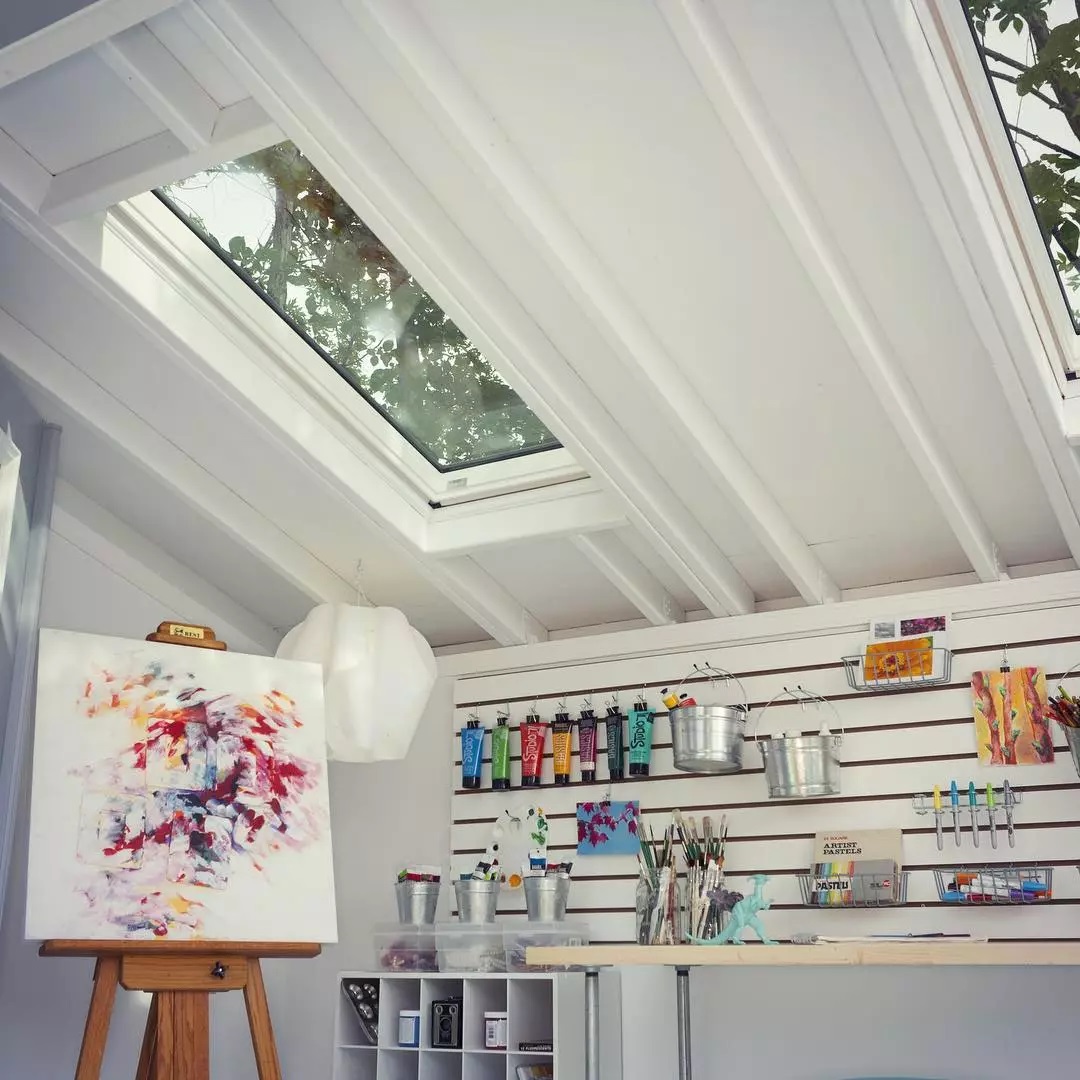Whether you love to create art or are looking to start a new artistic hobby, an art studio can be an ideal place for you. An art studio brings together all of your creative interests into one space, making it easier than ever to experiment and explore your artistic side. If you’ve been dreaming of the perfect space in which to practice your artistic trades, here, Brooklyn-based artist Jacob Farkas offers you some helpful tips that will help you create a home art studio.

Create a dedicated space for your art studio
While any room in your home can be turned into an art studio, a dedicated space makes it easier to focus on your practice. You’ll find it much more manageable to keep your studio clean, have everything you need within arm’s reach, and not worry about anything else cluttering your space. If you don’t already have a dedicated art studio space in your home, Jacob Farkas advises you to assess whether you have a suitable room.
First, determine what purpose your room serves. Does it have enough space to be functional while still fitting your needs? Is there enough natural light? Once you know what you need, you can look for ways to incorporate those factors into your studio. Your art studio can be a part of a larger room, but make sure to have enough space so you aren’t cramped or feeling the need to compromise on the quality of your equipment.
Consider adding furniture to optimize space. When you’re organizing your studio, keep in mind that you’ll want to be able to move freely while still being able to reach certain items. If your studio is tucked away in a corner, it might be difficult to get to certain items such as your art materials.
Get as much natural light as possible
Natural light is key to making your studio productive and enjoyable. Not only does it make your space feel more open and airy, but it also provides a source of illumination that can be used for various activities. Natural light can help you ensure that you have enough lighting for your practice.
Natural light can also be used for activities like model-making, where it can be great for illuminating your work and avoiding shadows that could create unwanted shadows on your walls. If you have a large enough space and access to plenty of natural light, adding windows can make your studio even more accessible to the outside world.
Natural light makes a huge difference when it comes to productivity, so investing in quality studio lights that can be turned on and off when necessary can help you maximize your time. You can also consider installing skylights, which are particularly beneficial when you’re trying to create works of art that include sky elements.
Add storage and work areas
When starting a new practice, it’s helpful to have a dedicated space in which to create. Ideally, your studio should include drawers or cabinets that are used to store materials and equipment. A space for your materials is especially helpful if you have a limited budget, as it makes it easy to avoid wasting money by buying materials that aren’t used often enough to warrant a full-price purchase. Your studio’s work area can help you maximize your space. Ideally, Jacob Farkas adds, this area should include a desk or table that can be used for art-related activities and storing materials. If you don’t have the room for a dedicated work space, you can consider placing another work area in an adjacent room.
Install a quality lighting system
Lighting is important in any room, but it’s especially crucial in a home studio. Natural light is essential, but it isn’t sufficient to create works of art. To create truly stunning works, you also need varying levels of artificial illumination. Artificial illumination can come in the form of both incandescent and fluorescent lighting. Incandescent lighting, while providing a warm glow, can produce a harsh glare that can harm your eyes and damage your paintings if used improperly. Fluorescent lighting, on the other hand, is more consistent and less harsh, making it better for creating works of art. When purchasing lighting, make sure you get a quality system that will be able to provide enough illumination for your work. Professional painter Jacob Farkas also recommends that you make sure the lighting is adjustable in terms of intensity and can be dimmed or turned off, as needed.
Don’t forget about safety
As you create your home art studio, don’t forget about safety. Your studio can become a dangerous environment if you don’t follow basic safety protocols. First, make sure that your studio is well lit and that lighting isn’t causing any hazards. This could include lights that are placed near flammable materials or near a window where they could fall or be knocked out. The same goes for electricity. Make sure your studio is safe to work in before you use it, as improper use can result in an injury or worse. Your studio should also be kept clean. This means using a vacuum to pick up any dust or dirt that accumulates while you’re in the studio and cleaning spills immediately with a damp cloth and soap.
Conclusion
Creating a home art studio requires a significant commitment of time and resources, but it can be an incredibly rewarding experience. While creating a studio takes a lot of hard work, it’s worth it if you enjoy the pursuit.